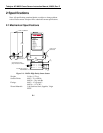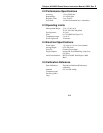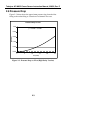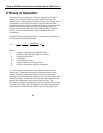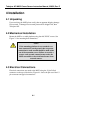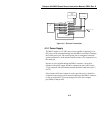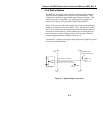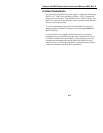
Teledyne API M452 Ozone Sensor Instruction Manual, 02852, Rev. E
3-1
3 Theory of Operation
The detection of ozone molecules is based on absorption of 254 nm UV
light due to an internal electronic resonance of the O
3
molecule. The
Model 452 uses a mercury lamp constructed so that a large majority of the
light emitted is at the 254 nm wavelength. Light from the lamp shines
through an absorption cell through which the sample gas being measured is
passed. The ratio of the intensity of light passing through the gas to a
reference measurement, which does not pass through the gas, forms the
ratio I/I
o
. This ratio forms the basis for the calculation of the ozone
concentration.
The Beer-Lambert equation, shown below, calculates the concentration of
ozone from the ratio of light intensities.
o
o
O
psi
C
ln
695.14
273
1
3
l
Where:
I = Intensity of light passed through the sample
I
o
= Intensity of light through sample free of ozone
= Absorption coefficient
l
= Path length
C
O
3
= Concentration of ozone
T
= Sample temperature in degrees Kelvin
P
= Pressure in pounds per square inch (absolute)
As can be seen the concentration of ozone depends on more than the
intensity ratio. Temperature and pressure influence the density of the
sample. The density changes the number of ozone molecules in the
absorption cell, which impacts the amount of light, removed from the light
beam. These effects are addressed by directly measuring temperature and
pressure and including their actual values in the calculation. The
absorption coefficient is a number that reflects the inherent ability of ozone
to absorb 254 nm light. Lastly, the absorption path length determines how
many molecules are present in the column of gas in the absorption cell.







